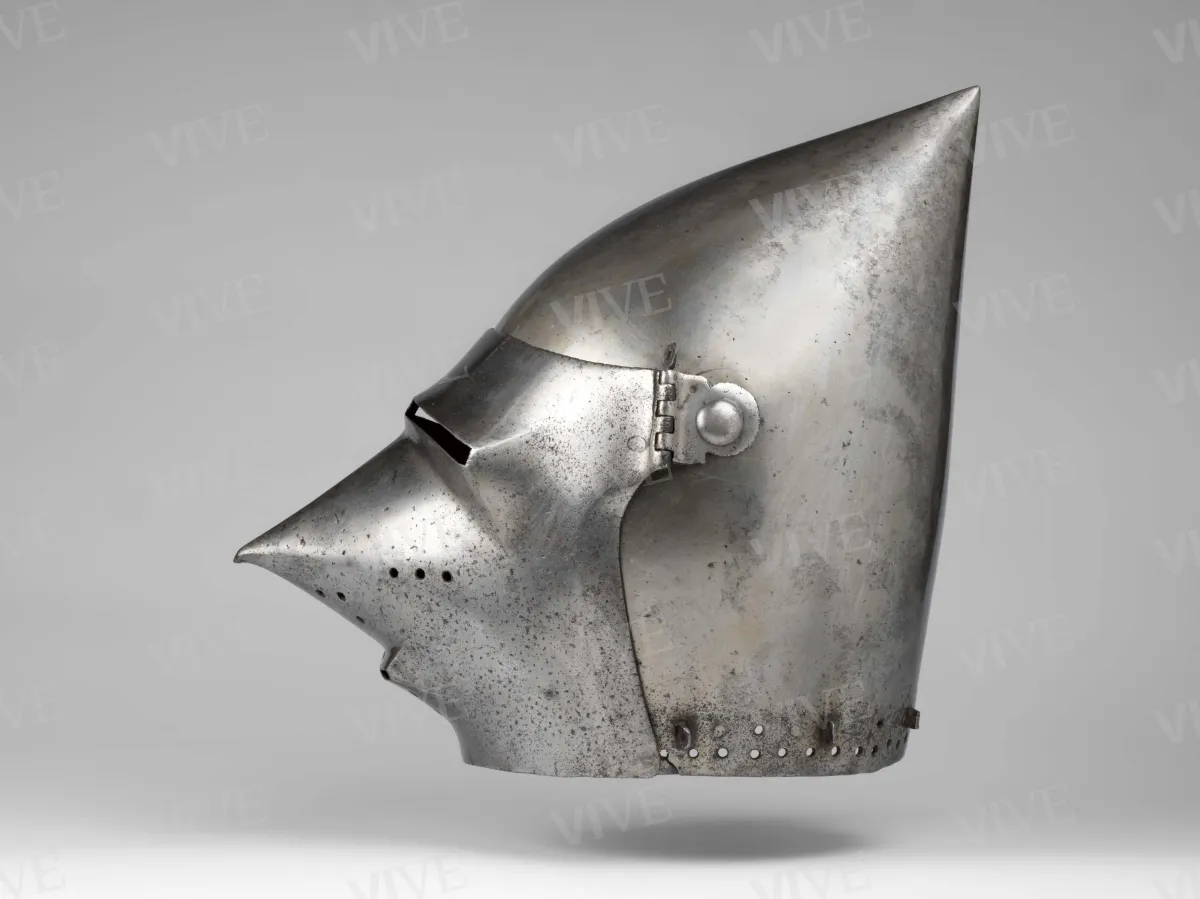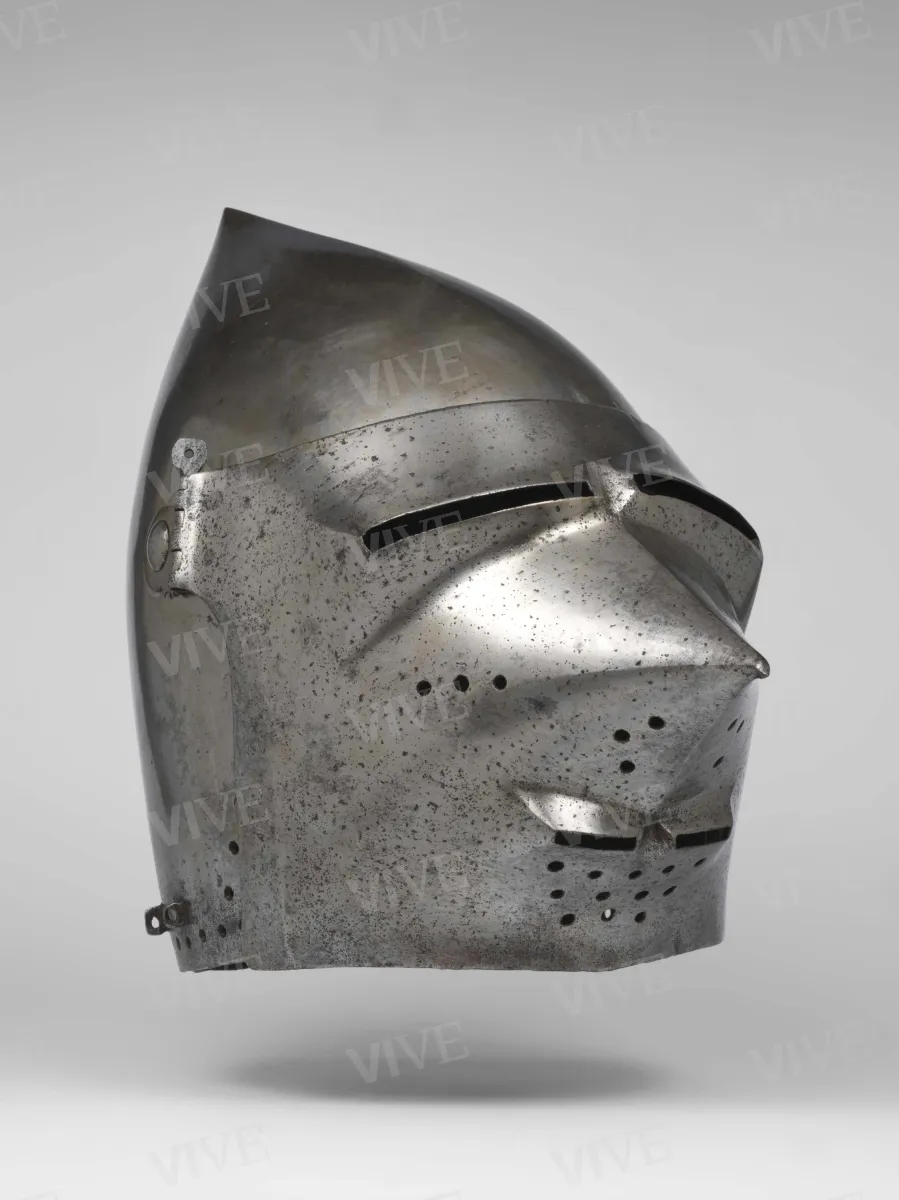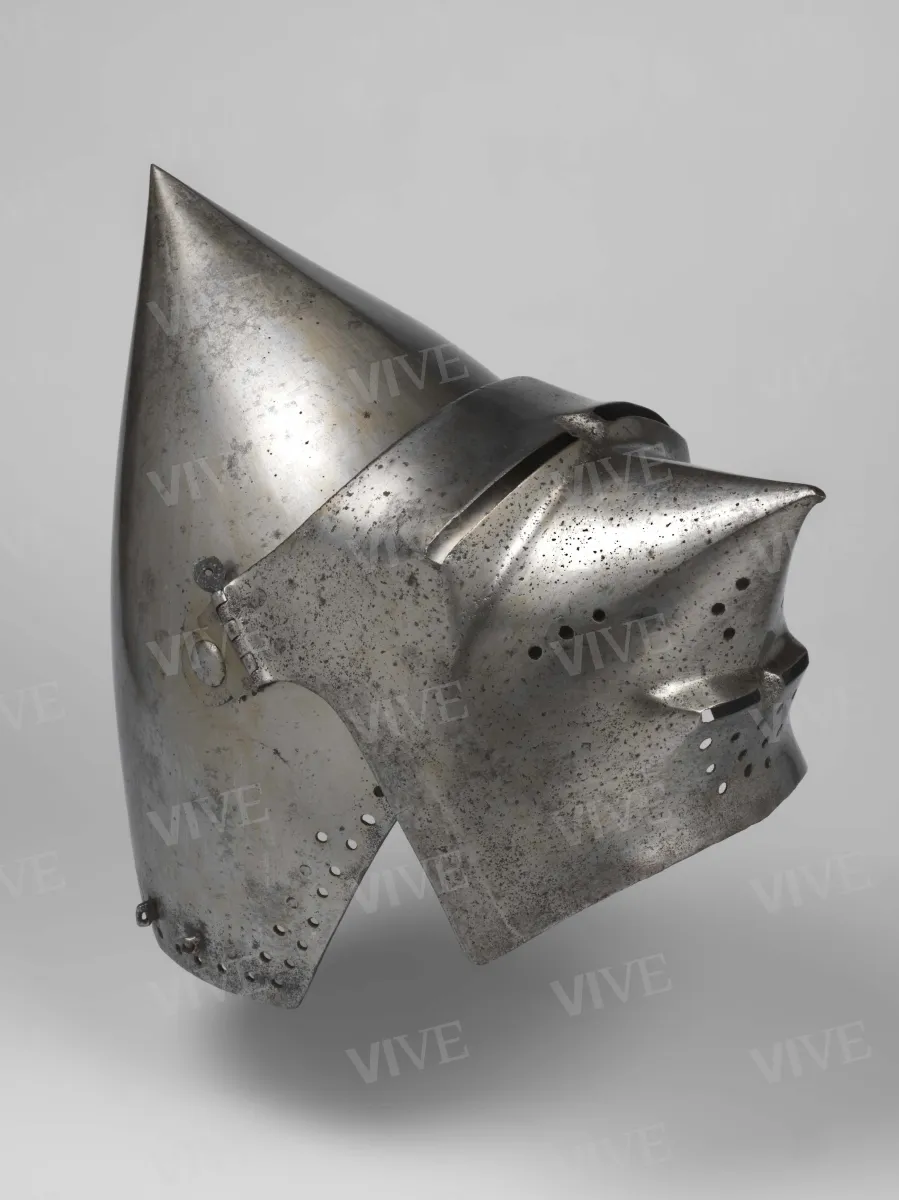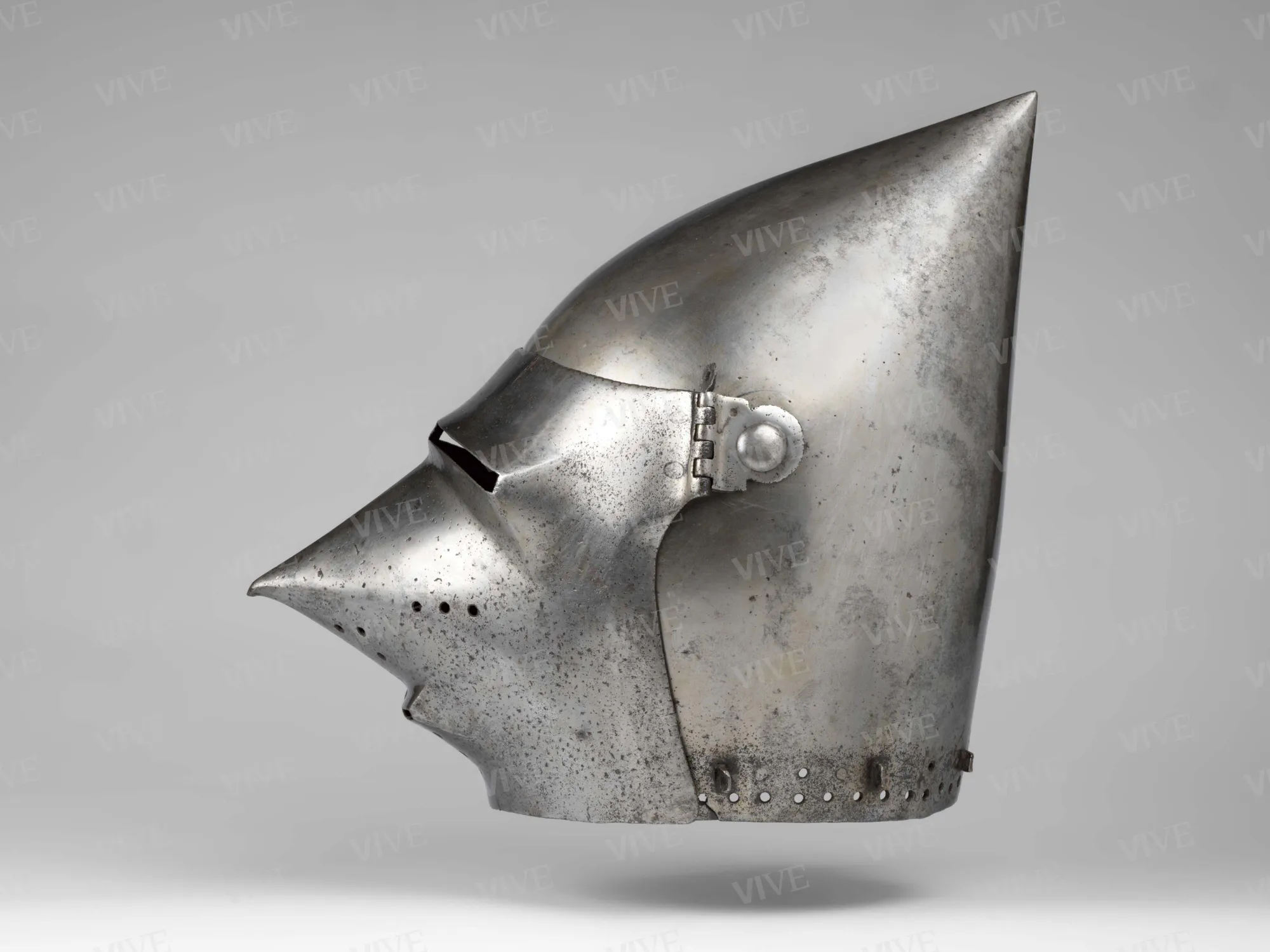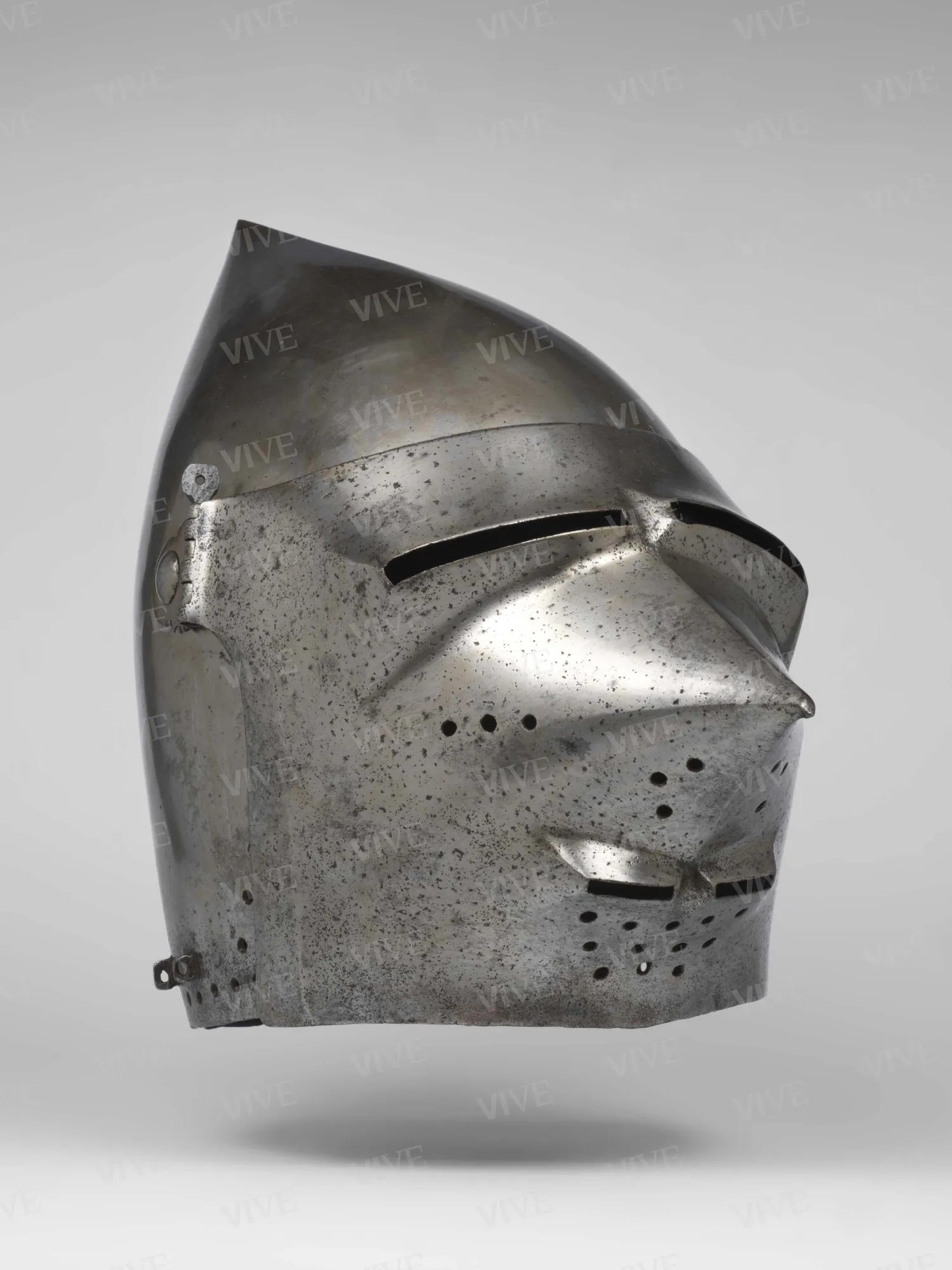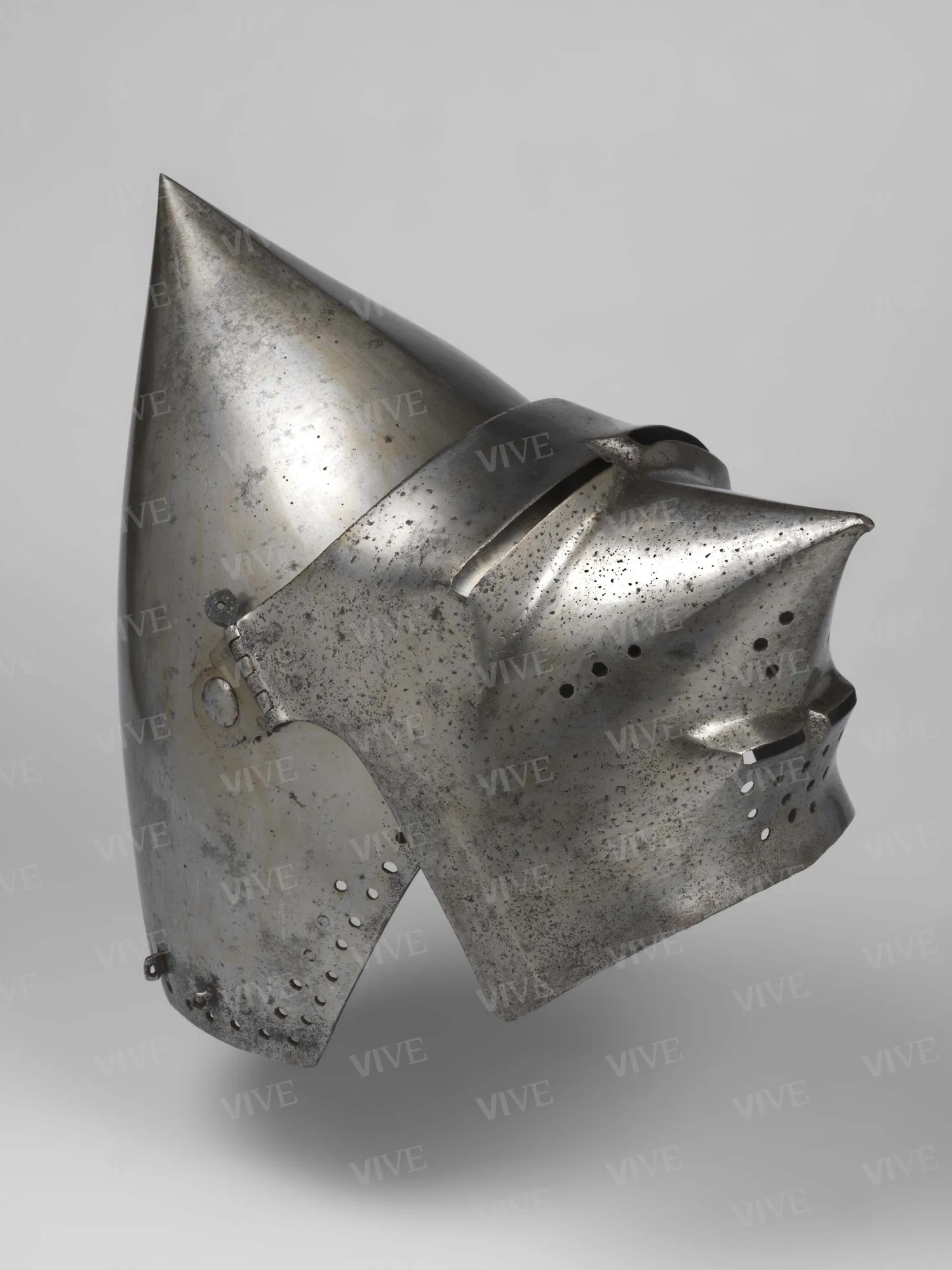Hounskull bascinet
Northern Italian production 15th century
Skullcap with a distinctly ogival shape that is not ribbed, the margins of which contain holes for the liner. The visor is pointed and ribbed along the side margins. The sight slits are made by means of two ribbed embossings along the sides. The skullcap and visor display different states of conservation but their stylistic homogeneity indicates that they are coeval.
Skullcap with a distinctly ogival shape that is not ribbed, the margins of which contain holes for the liner. The visor is pointed and ribbed along the side margins. The sight slits are made by means of two ribbed embossings along the sides. The skullcap and visor display different states of conservation but their stylistic homogeneity indicates that they are coeval.
Details of work
Catalog entry
The skullcap has a distinctly ogival shape and is not ribbed: the edges contain a double row of holes for the liner; the double row of holes becomes single where the face guard is applied. In the lower margin of the skullcap are five vervelles for the aventail, while the two sides have riveted functional pins for the application of the visor. The visor, improperly termed a “sparrow’s beak” (di Carpegna 1969), is pointed and ribbed along the lateral edges. Sight slits were incorporated by means of two ribbed pads at the sides. Two additional slits are located in the lower margin of the intensely pointed nasal with a deformed apex: these, thanks also to the presence of two sets of three lateral holes placed in the form of an X, are used for breathing. The lower edge of the cheekpieces sits several millimeters proud of the skullcap. Although the skullcap and visor are in different states of conservation, they are considered coeval by virtue of their stylistic homogeneity (di Carpegna 1977). Thomas (1962) suggested that the different state of conservation of the two parts was the result of a separation and different conservation of the skullcap and visor over a limited period of time: this would result in different types and levels of oxidation for the two pieces. This would be corroborated by the characteristics of the side hinges, which are coeval to the visor by virtue of the same indentations: they show the same state of conservation as the cap (di Carpegna 1977).
Chiara Paniccia
Entry published on 12 February 2025
State of conservation
The skullcap shows traces of rust. The lower back of the skullcap has signs of wear due to the application of the aventail to the attaching holes for the liner and the vervelles.
Provenance
Collezione Odescalchi, 1959.
Exhibition history
Vienna, Kunsthistorisches Museum, Europäische Kunst um 1400, 1962;
Poppi, Castello dei conti Guidi, Mostra di armi antiche, 1967;
Rome, Palazzo Venezia, Antiche armi dal sec. IX al XVIII già Collezione Odescalchi, May–July 1969;
Rome, Museo del Palazzo Venezia, Belle e terribili. La Collezione Odescalchi. Armi bianche e da fuoco, December 18 2022–March 23 2003.
Sources and documents
di Carpegna Nolfo, Scheda OA n. 30926 della Soprintendenza per i beni artistici e storici di Roma, 29 ottobre 1977.
References
Laking Guy Francis, A Record of European Armour and Arms Through Seven Centuries, I, London 1920, p. 250;
Thomas Bruno (a cura di), Europäische Kunst um 1400, catalogo della mostra (Wien, Kunsthistorisches Museum, 1962), Wien 1962, p. 502;
Terenzi Marcello (a cura di), Mostra di armi antiche, catalogo della mostra (Poppi, Castello dei conti Guidi 1967), Firenze 1967, n. 34;
di Carpegna Nolfo (a cura di), Antiche armi dal sec. IX al XVIII già Collezione Odescalchi, catalogo della mostra (Roma, Palazzo Venezia, maggio-luglio 1969), Roma 1969, p. 7;
Barberini, Bacinetto con visiera a punta, in Barberini Maria Giulia (a cura di), Belle e terribili. La Collezione Odescalchi. Armi bianche e da fuoco, catalogo della mostra (Roma, Museo di Palazzo Venezia, 18 dicembre 2022-23 marzo 2003), Roma 2002, p. 15.

